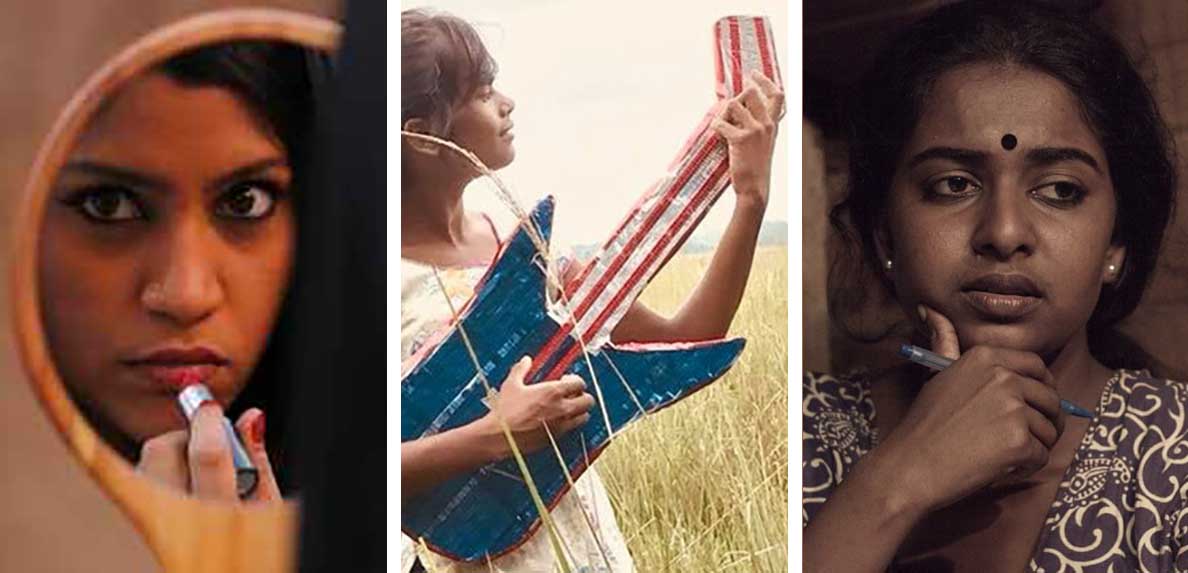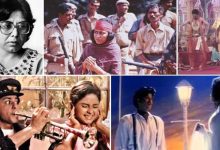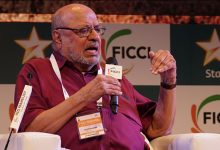In the present landscape of Indian cinematic productions, the ever-growing number of female authors brings a fresh breath of air that comes with interesting stories, powerful female characters, and challenging perspectives on various social, political, and cultural aspects. The great benefit brought about by the digitalization of the Indian film industry, mainly of the processes of production and distribution, is reflected in the availability of Indian films all around the world. The fact that new releases can reach an impressive number of people and that the marketing process is more efficient than ever mean that the stories written by women and, in many cases, directed /produced by women too, redefine Indian cinema and bring into discussion the other side of the coin. The viewers are thus offered a change of perspective in Indian cinema so far dominated by male voices and gazes, a change which does not necessarily imply a feminine representation of the world but, importantly, a different approach and a different gaze, which takes into account a number of social, domestic, and cultural issues, generally overlooked or poorly represented. The courage of breaking conventions; the boldness of representation, of subverting gender and genre stereotypes, and of portraying real women instead of prototypes; the highlighting of gender inequality and the creation of self-awareness; and poetic sensitivity are a few of the qualities displayed in the texts produced by these women scriptwriters.
In the early days of Indian cinema, presently one of the most prolific in the world, the presence of women as producers, directors, and screenwriters, though sparse and sporadic, was intentionally erased from film history. The works of women were engulfed by anonymity, and women’s voices were deliberately silenced. There is mention of this from as early as the first decade of the twentieth century (see Nelmes & Selbo, Women Screenwriters: An International Guide, 2015). Their stepping out of invisibility is a relatively recent movement that brought into the public’s attention the women screenwriters’ work. And their involvement in the change operated not only at the level of the film script but also at the level of public mentality.
The narratives in early Bollywood productions, by male filmmakers, featured over-boisterous masculinity; promoted male dominant attributes and specific behavioural patterns that normalized and legitimized women’s mistreatment; and established a set of gender roles and social stereotypes—the heroes were generally aggressive and callous, whereas the female characters were forever-oppressed and victimized damsels in distress. The new wave of narratives, by women screenwriters, come with a whole new breath of change. This change is brought about by little personal and domestic dramas with significant consequences upon the way in which women are perceived on the screen—tender, subtle stories of emancipation (Alankrita Shrivastava’s Lipstick under my Burka); narratives of psychological insight (Konkana Sen Sharma’s A Death in the Gunj); poetical approach to childhood and adolescence (Rima Das’s Village Rockstars); complex parental-filial relationships (Zeena Lakhani’s Hindi Medium); unconventional stories tackling unconventional topics and featuring unconventional heroines (Vidhu Vincent’s Manhole); and unexpected gazes cast upon real stories (Nandita Das’s Manto). These are not “women’s stories” written by women, exclusively for women, and depicting larger-than-life female characters. These are slices of reality; episodes of life that cast an uncompromising light upon contemporary issues and upon events seen, felt, re-imagined, dreamt of, re-told, and re-written through the words of a woman.
Consecrated names in Indian cinema, such as Mira Nair, Deepta Mehta, and Aparna Sen have demonstrated that change is already happening. And representatives of the younger generation—Rima Das, Shibani Bathija, Alankrita Shrivastava, Juhi Chaturvedi, and Konkona Sen Sharma, to name only a few—tell us through their scripts that women authors not only have a voice that gets louder with each passing day but also have a lot of beautiful stories to tell; thus making way for new aspiring writers who might help us see the world through different eyes.






Leave a Reply
You must be logged in to post a comment.